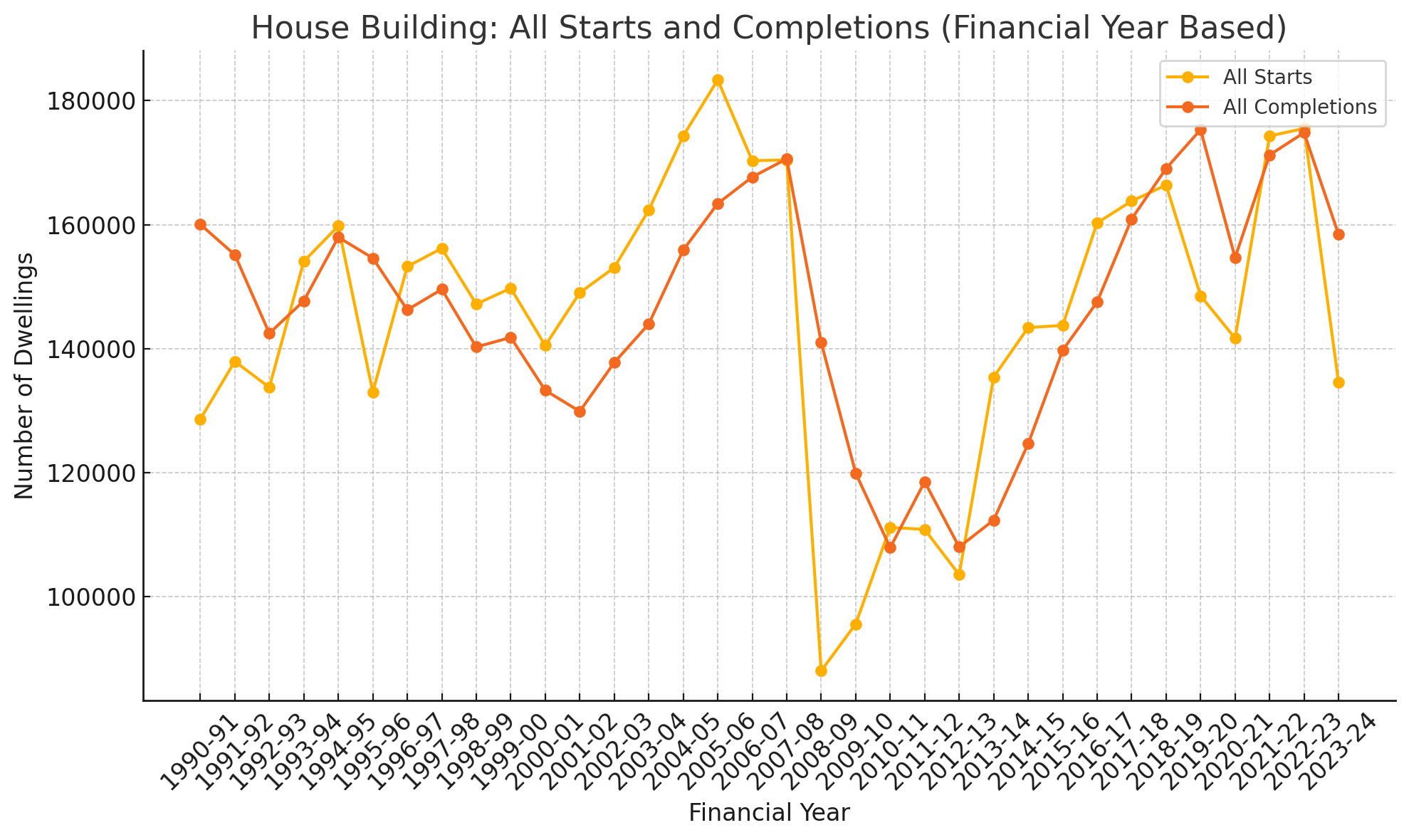More good news for the industry as the construction pipeline starts to fill

There’s plenty of demand for housing at the moment, but low inventory levels have driven up prices, and high mortgage rates have seriously dented affordability. But there’s good news in the latest figures from S&P Global’s Purchasing Managers’ Index (PMI), which show a UK economy navigating a path of cautious optimism, with the construction and services sectors providing signs of resilience despite mounting challenges. Crucially, the data reveal a slowdown in inflationary pressures, which could influence the Bank of England’s approach to interest rates in the months ahead.
Construction: Sector Sees Strongest Growth in Over Two Years
UK construction activity has surged in September, registering its fastest pace of growth since early 2022. The S&P Global UK Construction PMI climbed to 57.2, up from 53.6 in August, marking the seventh consecutive month of expansion, which should be good news for us in the mortgage industry. Civil engineering, buoyed by major infrastructure projects such as renewable energy developments, led the way with a reading of 59.0.

The construction sector is benefiting from favourable economic conditions, including lower borrowing costs and a more stable political environment, which fuelled an increase in new orders at the fastest rate seen in two-and-a-half years. However, cost pressures remain, with companies facing steeper prices for key raw materials, notably steel.
Read more: Rates set to drop to 2.75% says major lender
Services: Inflation Pressures Abating
The services sector, which makes up a substantial portion of the UK economy, also showed signs of steady, if slower, growth. The S&P Global UK Services PMI fell slightly to 52.4 in September from 53.7 in August, signalling a modest expansion. Business activity was supported by robust domestic demand, particularly in areas such as technology, real estate, and leisure.
Perhaps the most notable development is the easing of inflationary pressures within the sector. Prices charged by service providers rose at the slowest rate since February 2021, offering a rare glimpse of relief for businesses and consumers. This decline in price inflation, driven by competitive pressures and a reduction in operating cost increases, may help keep interest rates on a downwards trajectory – even though some Bank of England hawks are resisting interest rate cuts.
Read more: November rate cut much more certain
A Cautious Outlook
Despite these positive signs, there is a degree of caution within both the services and construction sectors. Business confidence has slipped, with firms expressing concerns over the forthcoming Autumn Budget and the potential impact of fiscal policy changes including a sizeable CGT raid. Moreover, the rate of employment growth has slowed, with many companies pausing recruitment efforts in response to cost pressures.
Nonetheless, both sectors continue to benefit from resilient domestic demand, which has helped offset weaker export sales. While the pace of expansion has slowed, the overall trajectory remains positive, and the UK economy continues to defy some of the more pessimistic forecasts
Interest Rate Outlook: Stability on the Horizon?
With inflation easing across the services sector and steady growth reported in construction, the Bank of England may find itself under less pressure to keep interest rates elevated. The moderation in price inflation is particularly encouraging, providing policymakers with some breathing space as they balance the need for economic stability against ongoing global uncertainties.
As businesses await the outcome of the Autumn budget, the picture remains one of cautious optimism. While challenges persist, particularly in the realm of cost pressures and employment, the latest PMI data suggest that the UK economy is maintaining a steady course for now.



